Embark on a global journey through the skies with our in-depth exploration of the top ten busiest airports worldwide. From the bustling Hartsfield-Jackson in Atlanta to the futuristic terminals of Shanghai Pudong. The pandemic altered air traffic patterns the world over—not only were fewer people flying between 2020 and 2022, but the places they were flying to and from changed considerably as travelers faced COVID protocols at the borders and reduced international flight capacity.
Before the pandemic, in 2019, the list of the world’s busiest airports was a true mix of U.S. and international airports, with more global hubs on it than U.S. ones. Last year, when the Airports Council International (ACI) released its latest rankings of the airports with the highest passenger traffic (based on 2021 traffic numbers), 8 of the top 10 busiest airports in the world were in the United States, and the remaining 2 were in China.
Top Ten Busiest Airports in the World
In the ever-expanding realm of global travel, airports play a pivotal role in connecting people and cultures. This article takes you on a journey through the skies, unveiling the top ten busiest airports worldwide. As bustling gateways to different corners of the globe, these airports are more than just transit points; they are hubs of activity, commerce, and cultural exchange.
Also, read: Top 10 most expensive cities to live in the world
1. Hartsfield-Jackson Atlanta International Airport (ATL)—Atlanta, USA
Situated in the heart of the American South, Hartsfield-Jackson Atlanta International Airport holds the prestigious title of the world’s busiest airport. What makes ATL stand out is not just its sheer volume of passengers but also its strategic location as a major connecting point for domestic and international flights. The airport’s evolution from a regional hub to a global player mirrors the economic and cultural growth of Atlanta itself.
Atlanta has the busiest airport in the world due to its convenient location. Located on the east coast of the United States, less than two hours of flight time from 80% of the American population, this airport is a global air traffic hub; it’s a gateway to all of North America. Atlanta Airport is a connected airport for many passengers from all around the world.

Atlanta Airport is also the hub of Delta Air Lines. This company is the largest in the world in terms of revenue and the second in terms of carried passengers. These two factors make Atlanta the busiest airport in the world.
2. Beijing Capital International Airport (PEK)—Beijing, China
Beijing Capital International Airport, the second busiest globally, stands as a testament to China’s economic rise and its increasing influence on the global stage. Serving as a vital link between the East and the West, PEK is more than a transportation hub; it is a symbol of China’s commitment to connectivity and its role as a key player in the international aviation landscape.
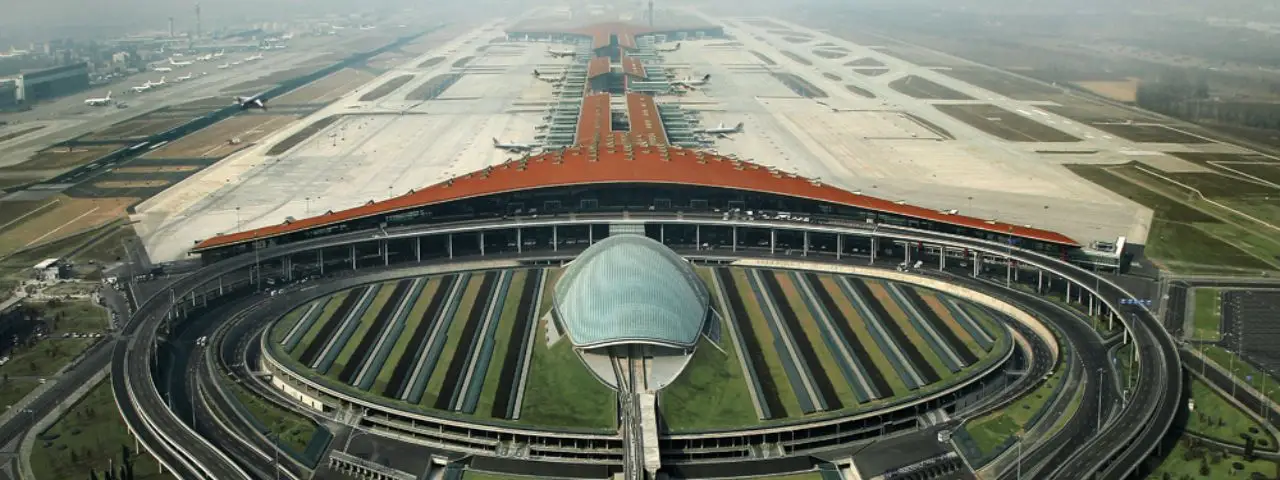
China’s domestic aviation market is also booming. The Chinese are moving more and more in the country and at a breakneck pace. Asia is the main source of growth in global passenger traffic today. Traffic is growing so fast that China has opened a second, larger, and more modern international airport in Beijing, Beijing-Daxing Airport. Beijing Capital Airport is expected to lose many passengers in the coming years due to this new airport.
3. Dubai International Airport (DXB)—Dubai, UAE
Nestled in the desert oasis of Dubai, DXB is not just an airport; it is a masterpiece of modern architecture and luxury. As the third busiest airport globally, Dubai International reflects the opulence and grandeur of the city it serves. Beyond its functional role, DXB is a symbol of Dubai’s ambition and vision to be a global hub for business and tourism.
Dubai Airport also enjoys a prime location. At the crossroads of Asia, Europe, and Africa, the airport has become a major transit airport for many passengers from these regions.

Emirates Airlines has established its hub at Dubai Airport. This company, with 255 planes, has developed an impressive international network. Emirates connects Dubai to most major cities in the world. The company is also recognized for the quality of its service to passengers. It has contributed immensely to the development of Dubai airport traffic.
Also, read: Top 10 Most Unique Hotels in the World
4. Los Angeles International Airport (LAX)—Los Angeles, USA
LAX, located in the entertainment capital of the world, is more than just a transit point; it’s a gateway to the allure of Hollywood. As the fourth-busiest airport globally, LAX plays a pivotal role in connecting people to the dreams and stories that emanate from the heart of the global entertainment industry.
While most major cities in the United States have several airports, Los Angeles does not. The city’s only major airport is LAX, and most air traffic is concentrated there.

Los Angeles Airport is also a hub for four major airlines. The three biggest American companies are Delta, United, and American, as well as Alaska Airlines. There are no airports in the United States or around the world that serve as a hub or major city for more airlines than Los Angeles Airport.
5. Tokyo Haneda Airport (HND)—Tokyo, Japan
Tokyo Haneda Airport, the fifth busiest in the world, is a testament to Japan’s technological prowess and commitment to efficiency. Situated in the vibrant city of Tokyo, HND is more than a transportation hub; it embodies the precision and innovation that define Japan’s reputation on the global stage. Join us as we explore the significance of this airport in the Land of the Rising Sun.
Read more: Top 10 Most Important Wars in History
Although there are two major airports in Tokyo (along with Narita), Haneda is favored by airlines and passengers. This luxury airport is much closer to the city center than Narita, and it takes only 30 minutes by public transport to reach the historic heart of the Japanese capital. This is a significant advantage in a city of 2,145 km2, more than 20 times the area of intramural Paris.
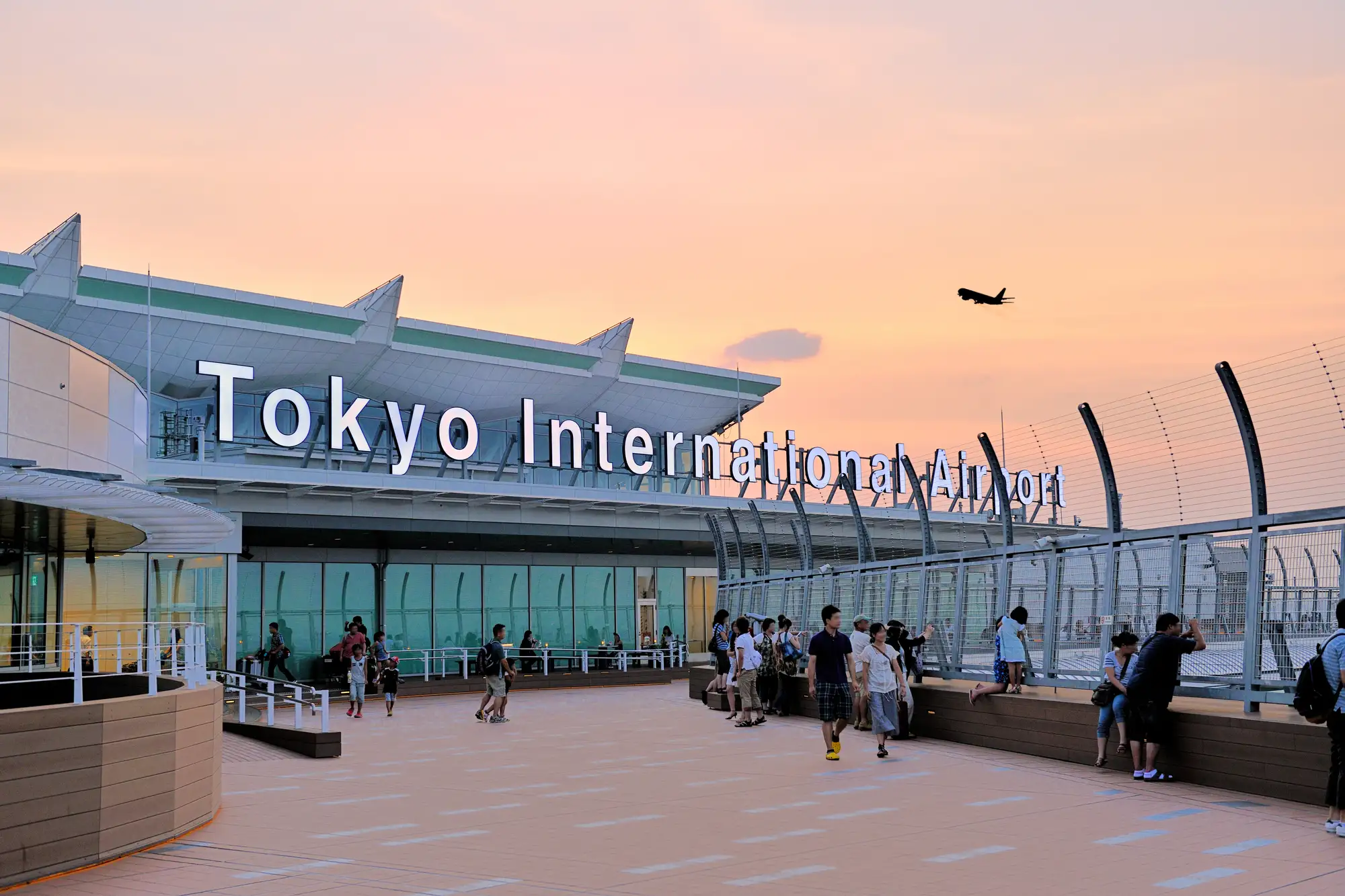
Tokyo Haneda Airport is also a favorite among passengers in terms of punctuality, hospitality, service, and cleanliness. Japanese airlines Nippon Airways and Japan Airlines connect most of the world’s major cities from Tokyo Haneda Airport.
6. O’Hare International Airport (ORD)—Chicago, USA
O’Hare International Airport, nestled in the heart of the American Midwest, has grown from humble beginnings to become the sixth busiest airport globally. Serving as a crucial hub connecting various destinations worldwide, ORD plays a vital role in the economic and cultural landscape of Chicago, showcasing the city’s spirit and ambition.
Due to its ideal geographic location in Illinois, Chicago O’Hare Airport has been chosen as a hub by major airlines such as United and American Airlines. United is even headquartered in the city, and the airport is its largest hub in the country.
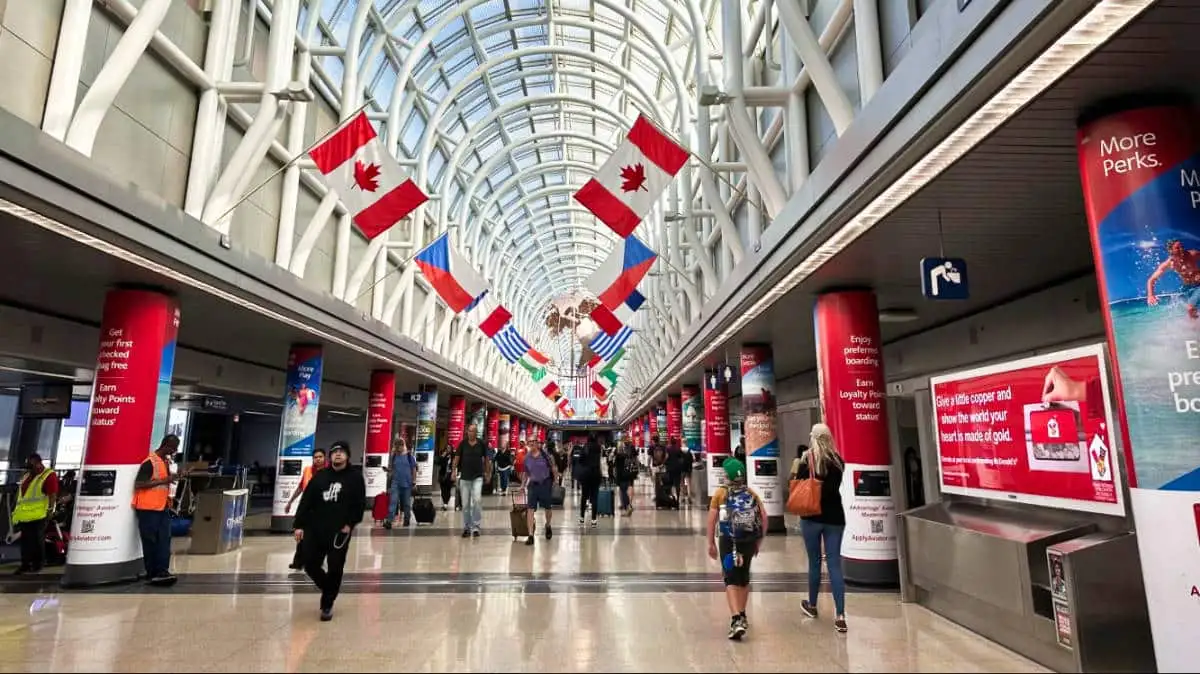
Chicago O’Hare Airport was a pioneer in international civil aviation. This is where the terminals, gateways, and direct access from highways appeared. It is now a benchmark in the airport sector, and this also partly explains its attractiveness.
7. London Heathrow Airport (LHR)—London, UK
London Heathrow Airport, the seventh busiest in the world, is more than a transportation hub; it is an integral part of the United Kingdom’s skyline. As the primary international gateway to the UK, LHR reflects the rich history and diversity of London. Join us as we delve into the significance of this iconic airport in connecting the UK to the world.
Even though London has the most airports among the European capitals (6 airports), London Heathrow Airport manages to be the busiest airport in Europe. It also manages to rank among the top 10 busiest international airports in the world.
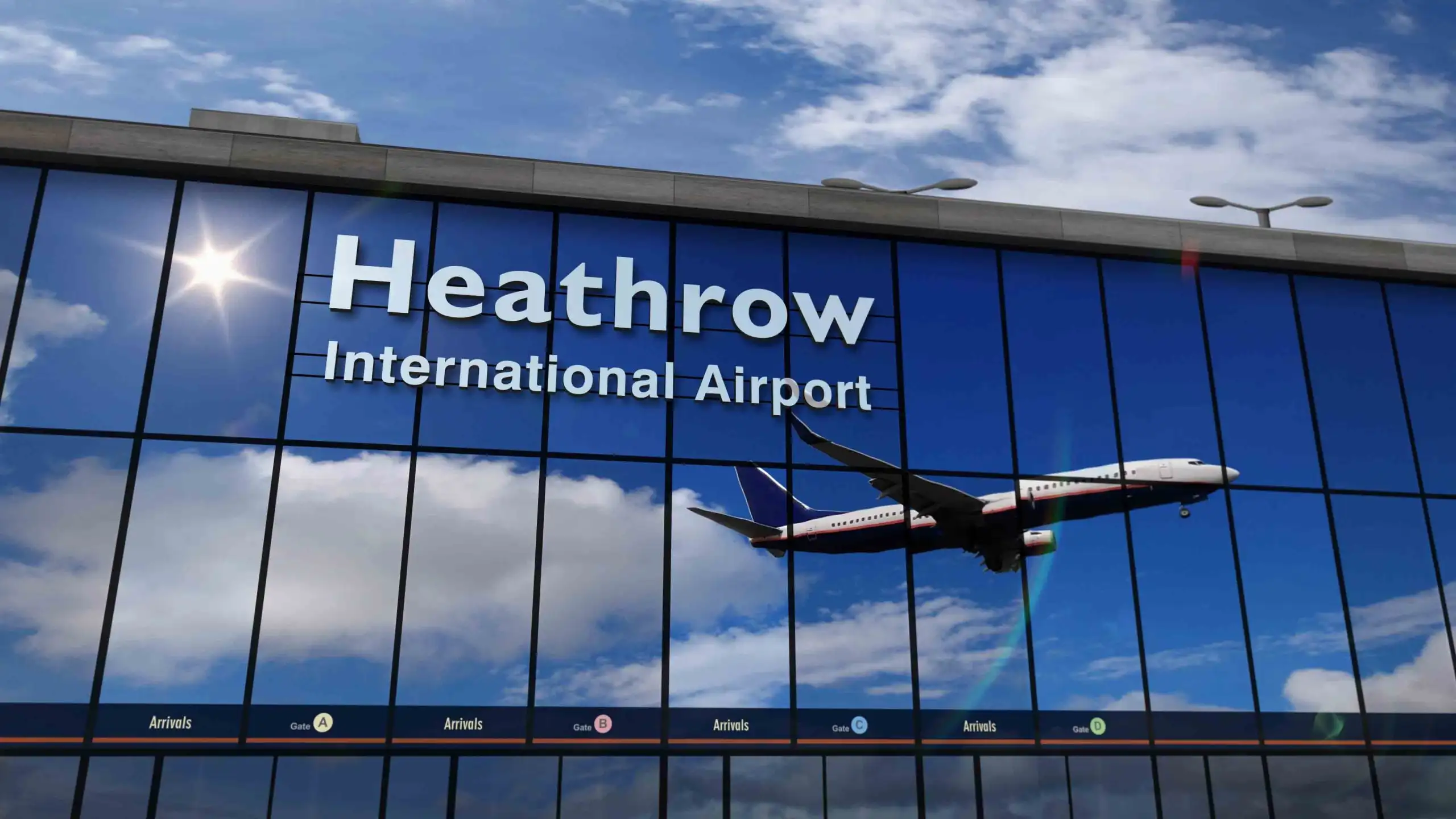
London Heathrow Airport is indeed a hub for global air traffic. It is the European airport that receives the most international passengers in transit. London Heathrow is connected to many airports in Asia, the Middle East, and North America. This partly explains the popularity of this airport.
8. Shanghai Pudong International Airport (PVG) in Shanghai, China
Shanghai Pudong International Airport has rapidly ascended the ranks to become the eighth busiest airport globally. Situated in the dynamic city of Shanghai, PVG is more than just a transportation hub; it is a symbol of China’s economic boom and global ambitions. Explore with us as we uncover the significance of this rising star in the global aviation landscape.
Shanghai Pudong Airport, although competing with Shanghai SHA Airport, is the city’s most popular and busiest. It is connected to Shanghai by the maglev train, the fastest train in the world with a speed of 430 km/h. This airport is the fastest-growing airport in the world today.
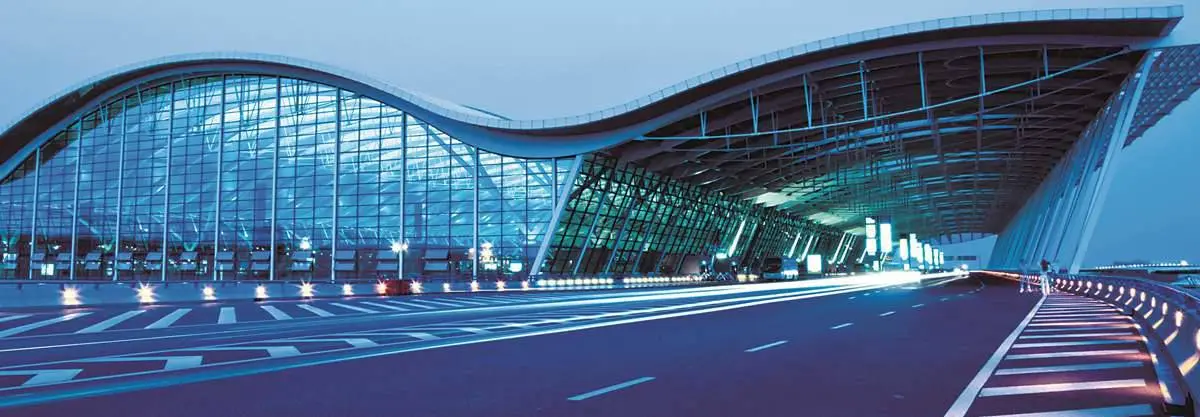
The Chinese airline China Eastern has established its main hub there and operates the majority of its flights from the airport. This company, which carries more than 80 million passengers per year, notably connects Shanghai-Pudong Airport to New York John F. Kennedy Airport in 15:40 hours.
9. Charles de Gaulle Airport (CDG)—Paris, France
Charles de Gaulle Airport, the ninth busiest globally, combines elegance with efficiency. Serving as a vital link to the City of Light, CDG is more than just an airport; it is a reflection of Parisian style and sophistication. Join us as we explore the charm and significance of this airport in connecting Paris to the rest of the world.
Read, more: Top Ten International Airports in the World
Paris Charles-de-Gaulle Airport is the largest of the Parisian airports. With its four runways and three terminals, it is also one of the largest airports in Europe and the transit airport for many passengers. It ranks second in Europe in terms of passengers. Paris Charles-de-Gaulle airport has a metro that connects the various terminals, an “Auroville” shopping center, and a train line that connects it to the center of Paris.
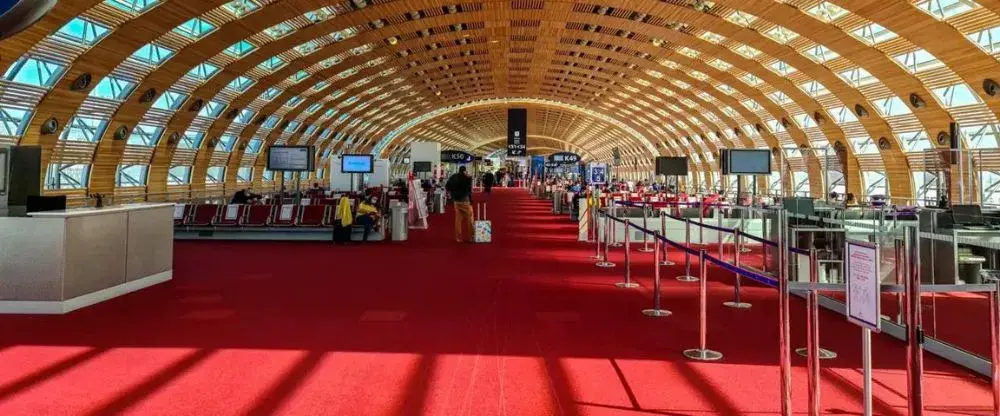
More than 115 airlines land at Paris Roissy every week. Air France, which transports more than 104 million passengers annually, has its main hub and even its headquarters there. CDG is also the main European hub of the SkyTeam alliance.
10. Dallas/Fort Worth International Airport (DFW)—Dallas, USA
Our journey concludes in the Lone Star State with Dallas/Fort Worth International Airport, the tenth busiest globally. Explore the Texan spirit of DFW and its pivotal role in connecting the vast landscapes of the United States. DFW is not just an airport; it is a symbol of Texas-sized connectivity and the dynamic spirit of the American Southwest.
Dallas Airport is huge. With 7 runways, 164 aircraft doors, and 70 km2 of buildings, it ranks among the largest airports in the world. It also enjoys an excellent location. Located in the heart of the United States, it serves as a major transit airport within the country for many passengers.
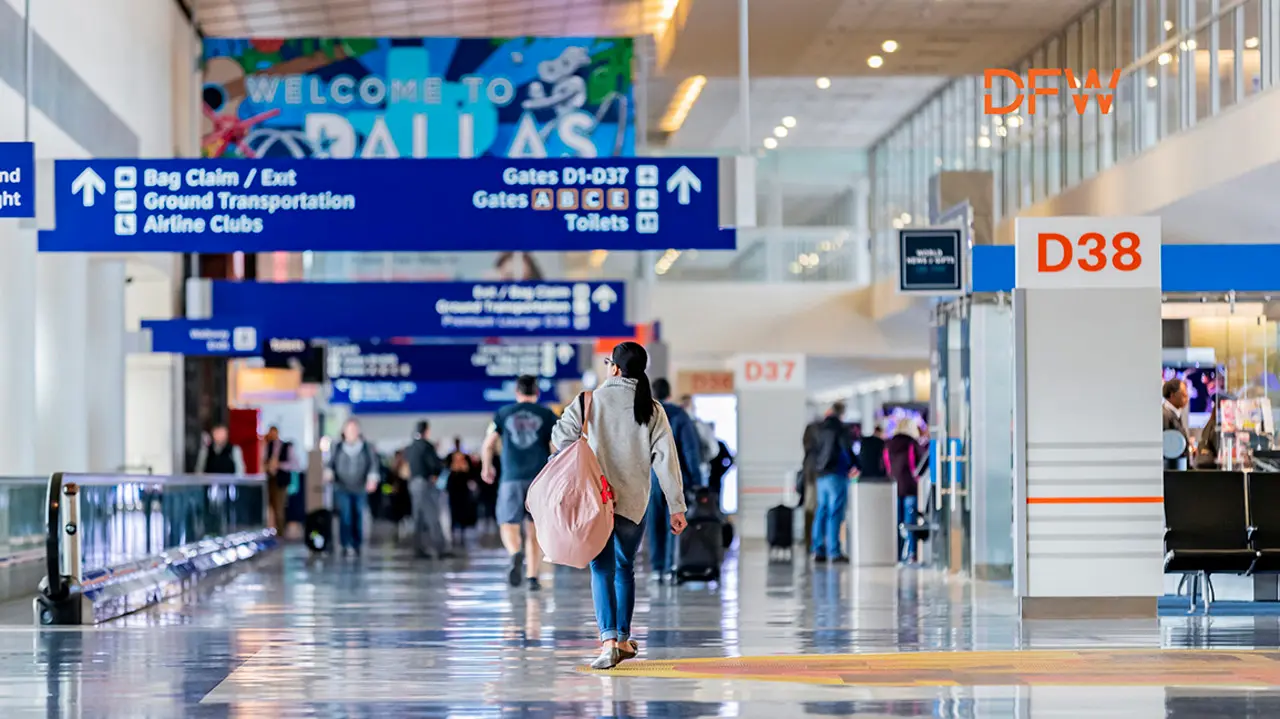
Dallas/Forth Worth Airport is also the hub of American Airlines, the world’s largest airline in terms of passengers carried. American carries more than 200 million passengers per year, or over 500,000 per day, with its 864 airlines. The company even has its headquarters in downtown Dallas.
FAQs:
Q. How is airport traffic measured?
Airport traffic is typically measured by the number of passengers passing through an airport within a specific timeframe, usually a year. It includes both arriving and departing passengers.
Q. Why are these airports considered the busiest?
These airports top the list due to their high passenger volumes, extensive flight networks, and strategic geographical locations, making them crucial hubs in global air travel.
Q. How has the COVID-19 pandemic impacted airport rankings?
The pandemic has significantly affected air travel, leading to fluctuations in airport rankings. Many airports experienced a decline in passenger numbers due to travel restrictions and safety concerns.
Conclusion:
In the intricate tapestry of global travel, these top ten busiest airports serve as vital threads, weaving together diverse cultures and economies. From the bustling runways of Hartsfield-Jackson to the futuristic terminals of Shanghai Pudong, each airport tells a unique story of connectivity, progress, and the human spirit’s unyielding desire to explore the skies. As we continue to navigate the ever-changing landscape of air travel, these airports remain beacons, guiding us through the boundless possibilities that the world of aviation has to offer.


































